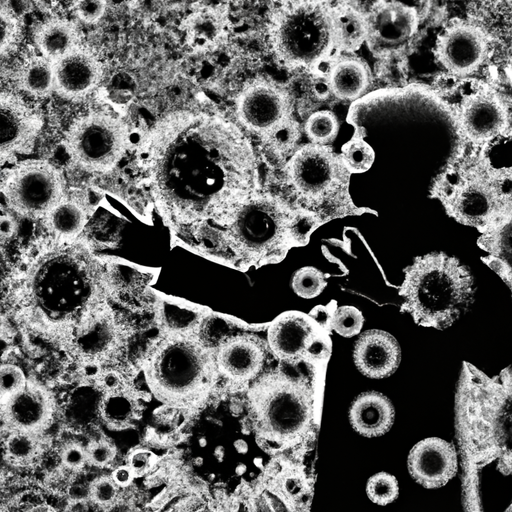The flu, also known as influenza, is a highly contagious respiratory illness that affects millions of people worldwide each year. With its ability to spread rapidly and cause severe illness, it is important to understand the flu’s symptoms, causes, and how it can be diagnosed. In this article, we will delve into the various aspects of the flu, including its symptoms, causes, and diagnosis. We will also explore the different treatment options available, such as medications and home remedies, as well as preventive measures to help navigate flu season. By arming ourselves with knowledge and taking proactive steps, we can effectively combat the flu and protect ourselves and our loved ones from its potentially debilitating effects.
1. "Understanding the Flu: Symptoms, Causes, and Diagnosis"
The flu, also known as influenza, is a viral infection that affects the respiratory system. It is a highly contagious illness that spreads easily from person to person. Understanding the flu and its symptoms, causes, and diagnosis is crucial for timely and effective treatment.
One of the first signs of the flu is the sudden onset of symptoms. Individuals infected with the flu often experience a high fever, body aches, fatigue, and a dry cough. These symptoms can be severe and debilitating, forcing individuals to stay in bed for several days. Additionally, headaches, sore throat, nasal congestion, and sneezing may also accompany the flu.
The flu is primarily caused by the influenza virus. There are different strains of the virus, including influenza A, B, and C. Influenza A and B are the most common types that cause seasonal flu outbreaks. The virus spreads through respiratory droplets when an infected person coughs, sneezes, or talks. It can also be transmitted by touching contaminated surfaces and then touching the face.
To diagnose the flu, healthcare professionals may perform a physical examination and ask about symptoms and medical history. In some cases, they may administer a rapid influenza diagnostic test (RIDT) that detects the presence of the flu virus within minutes. However, these tests may have limitations in terms of accuracy, particularly if performed too early or too late after symptom onset.
Another diagnostic method is a viral culture or a polymerase chain reaction (PCR) test, which provides more accurate results but can take longer to obtain. These tests are usually reserved for severe cases or when a definitive diagnosis is required. Additionally, healthcare providers may consider the prevalence of flu in the community and the patient’s exposure to the virus when making a diagnosis.
Early treatment is essential to minimize flu complications and reduce symptoms. Most individuals with uncomplicated flu can recover at home with plenty of rest, fluids, and over-the-counter pain relievers to alleviate fever and discomfort. Antiviral medications may be prescribed for individuals at high risk of complications, such as the elderly, young children, pregnant women, and those with underlying health conditions.
Prevention is key in managing the flu. Annual flu vaccines are recommended for everyone over six months of age, as they offer protection against the most prevalent strains of the virus. Good hygiene practices, including frequent handwashing, covering the mouth and nose when coughing or sneezing, and avoiding close contact with infected individuals, can also help prevent the spread of the flu.
In conclusion, understanding the flu and its symptoms, causes, and diagnosis plays a crucial role in effectively managing this contagious illness. Recognizing the symptoms, knowing how
2. "Effective Treatment Options for the Flu: Medications, Home Remedies, and Prevention"
When it comes to treating the flu, there are several effective options available that can help alleviate symptoms and promote a speedy recovery. From medications to home remedies and preventive measures, individuals have various choices in managing this viral infection.
Medications play a crucial role in treating the flu and are often recommended for individuals who are at high risk of developing complications or those with severe symptoms. Antiviral drugs, such as oseltamivir (Tamiflu) and zanamivir (Relenza), are commonly prescribed as they can reduce the severity and duration of flu symptoms when taken within 48 hours of symptom onset. These medications work by inhibiting the replication of the influenza virus in the body, thus slowing down the progression of the illness. It is important to note that antiviral drugs are prescription-only and should be taken under the guidance of a healthcare professional.
In addition to medications, there are several home remedies that can provide relief from flu symptoms and aid in the recovery process. One of the most crucial aspects of managing the flu at home is ensuring adequate rest and hydration. Getting plenty of rest allows the body to focus its energy on fighting off the virus, while staying hydrated helps to prevent complications such as dehydration. Drinking plenty of fluids, especially water, herbal teas, and clear broths, can help soothe a sore throat, reduce congestion, and alleviate fatigue.
To ease symptoms such as fever, body aches, and headaches, over-the-counter pain relievers like acetaminophen (Tylenol) or ibuprofen (Advil, Motrin) can be used. However, it is important to follow the recommended dosages and consult a healthcare professional, especially when giving these medications to children.
Prevention is always better than cure, and this holds true for the flu as well. Vaccination is the most effective way to prevent the flu and its complications. Yearly flu shots are recommended for everyone above the age of 6 months. The flu vaccine contains inactivated or weakened strains of the virus, which stimulate the immune system to produce antibodies. These antibodies provide protection against the circulating strains of the virus, reducing the risk of contracting the flu or developing severe symptoms.
Apart from vaccination, practicing good hygiene is crucial in preventing the spread of the flu. Regularly washing hands with soap and water for at least 20 seconds, using hand sanitizers when soap is unavailable, and covering the mouth and nose with a tissue or elbow when sneezing or coughing can significantly reduce the transmission of the virus.
In conclusion, there are several effective treatment options for the flu ranging from antiviral medications to home remedies
3. "Navigating Flu Season: Tips for Early Detection, Vaccination, and Self-Care"
The flu season can be a challenging time for many individuals, as the virus spreads rapidly and poses a significant risk to our health. However, by being proactive and taking certain measures, we can navigate through this season with greater ease. This section will provide valuable tips for early detection, vaccination, and self-care to help you stay healthy and minimize the impact of the flu.
Early detection is crucial in managing the flu effectively. Understanding the symptoms and recognizing them at an early stage can make a significant difference in how quickly you recover. Common symptoms of the flu include a high fever, body aches, fatigue, sore throat, cough, and nasal congestion. If you experience any of these symptoms, especially during flu season, it is important to seek medical attention promptly. Early diagnosis allows healthcare professionals to prescribe antiviral medications that can help reduce the severity and duration of the illness.
Vaccination is one of the most effective strategies to prevent the flu. Each year, flu vaccines are developed to target the most prevalent strains of the virus. It is recommended that everyone over the age of six months receives a flu shot, particularly those at high risk of complications, such as young children, pregnant women, the elderly, and individuals with underlying health conditions. The vaccine not only protects you from the flu but also helps prevent the spread of the virus to others. It is essential to get vaccinated early in the flu season, as it takes a couple of weeks for the vaccine to provide full protection.
Apart from early detection and vaccination, self-care practices can significantly aid in preventing the flu or managing symptoms if you do contract the virus. Simple yet effective measures include regular handwashing with soap and water, avoiding close contact with individuals who are sick, and practicing good respiratory hygiene by covering your mouth and nose with a tissue or your elbow when coughing or sneezing. Additionally, maintaining a healthy lifestyle with adequate sleep, regular exercise, and a balanced diet strengthens your immune system, making it more resilient against infections.
If you do fall ill with the flu, self-care is essential for a speedy recovery and to prevent complications. Resting is crucial to allow your body to fight off the virus. Stay home from work or school, and avoid contact with others to prevent spreading the illness. Over-the-counter medications can help alleviate symptoms such as fever, pain, and congestion. Drinking plenty of fluids, especially water, helps prevent dehydration and soothes a sore throat. Warm liquids like herbal teas and soups can also provide relief and comfort.
In conclusion, navigating flu season successfully requires a proactive approach. Early detection through recognizing symptoms and seeking medical attention promptly, along with annual flu vaccination



